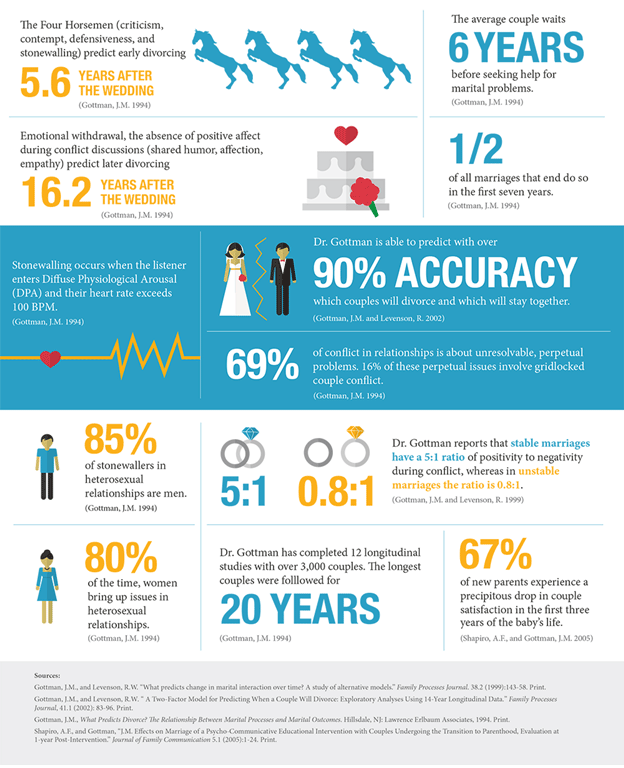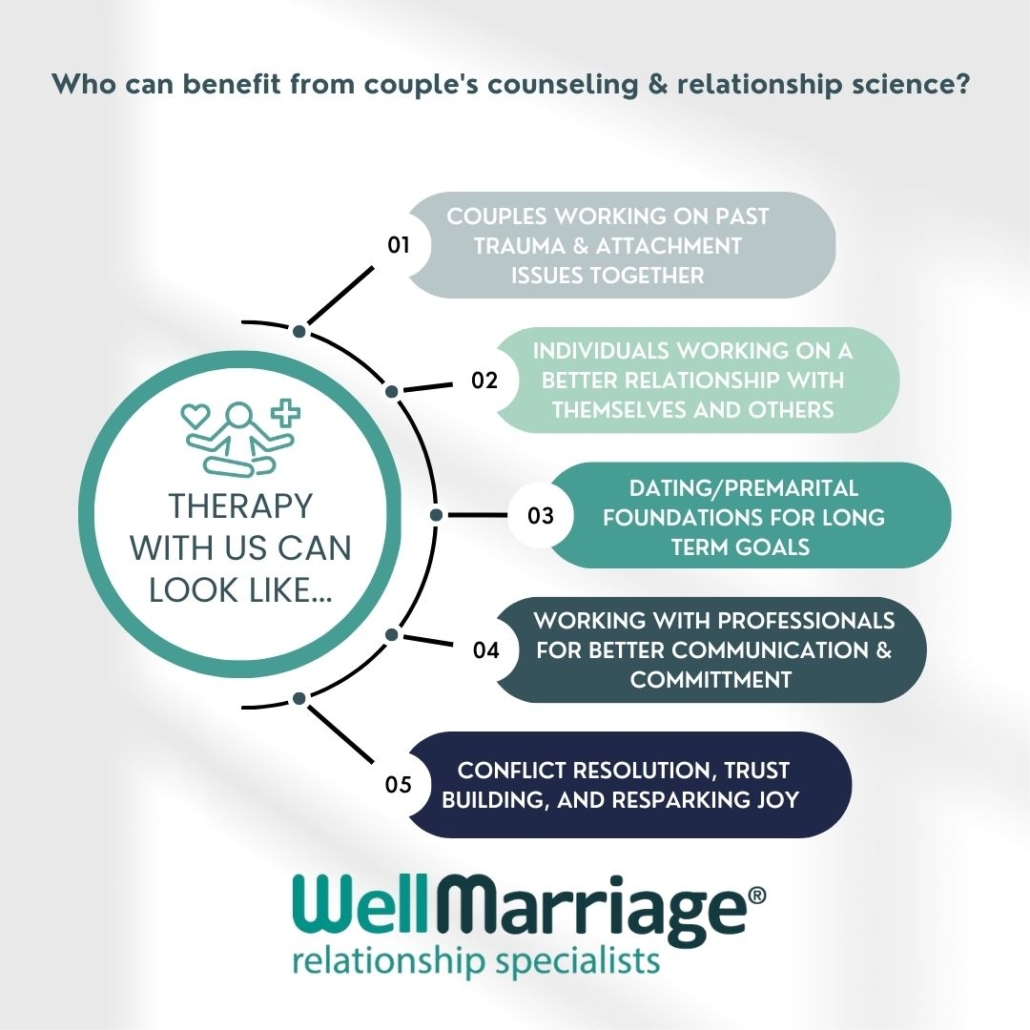Little Known Questions About Aim Point Counseling.
Little Known Questions About Aim Point Counseling.
Blog Article
The Aim Point Counseling Diaries
Table of Contents8 Simple Techniques For Aim Point CounselingRumored Buzz on Aim Point Counseling8 Simple Techniques For Aim Point CounselingThe Ultimate Guide To Aim Point CounselingSome Ideas on Aim Point Counseling You Need To KnowThe Best Strategy To Use For Aim Point Counseling
The longitudinal design involves a pre-treatment survey and two follow-up studies at 3- and 12-months post-intervention. The study is established in 8 Relationships Australia Victoria centres, throughout cosmopolitan, outer suburban areas, and regional/rural websites. Relationships Australia, a non-government organisation, is the biggest copyright of pair therapy and partnership services in Australia.
In Australia, the typical length of marriage before splitting up is 8.8 years, and roughly fifty percent of all divorces include pairs with youngsters [1] These high prices of partnership break down have actually been constantly connected with unfavorable wellness effects for both adults and youngsters following divorce/separation. These include isolation from support networks, and reduced revenue and standard of living for both adults and kids [3], dilemmas of commitment over youngsters for guys, and depression and loss of identity for females [4,5]
Aim Point Counseling Things To Know Before You Buy
The effects of divorce and splitting up can be harmful, research indicates that high partnership dissonance in undamaged pairs is additionally most likely to have unfavorable results.
Elements that affect the outcomes of these services require detailed investigation. Study to date has recognized both pair and specific factors that may add to partnership dissonance. These consist of partnership fulfillment and commitment at the pair level, and clinical depression at the specific degree. Durable research study to examine relationship-enhancing interventions in the neighborhood are limited.
Our Aim Point Counseling PDFs
Connection contentment has been one of the most common result variable recognized in greater than 200 assessments of couple therapy [11,12] Studies have actually located substantial improvements in partnership contentment from pre- to post-treatment [13,14] and over the course of one to two years complying with counselling [15] In these studies, partnership satisfaction was most regularly analyzed utilizing the Dyadic Modification Range (DAS) [16] While a lot of research studies suggest improvements in partnership contentment following couple therapy, they are limited by the examples and steps used, mainly temporary follow-up time frames, and evaluations that do not account for the dyadic nature of pair information., is an additional commonly examined connection end result.
To summarise, research suggests that couple-specific variables along with specific factors might forecast the outcomes of couple coaching and partnership solutions. The causal instructions of these partnerships, however, is much less clear. These monitorings are necessary, since, to validate and direct the application of connection solutions such as pair counselling, empirical proof has to explore both the outcomes of connection services and the aspects that forecast effective treatment.
, at least in some European nations.

We presently know little concerning the profiles of couples who seek out connection education and useful reference learning compared to those who look for partnership therapy, or the end results of these programs. Nonetheless, anecdotal evidence recommends that there might be significant distress amongst a minimum of some couples looking for partnership education. Relationship education and learning programs differ from pair counselling as they are typically very structured, carried out in teams, and concentrate on a mixture of four components; understanding, comments, cognitive modification, and abilities training [45]
Everything about Aim Point Counseling
Comments involves participants completing sets of questions concerning their connection (e.g. procedures of social troubles), and obtaining details on what their scores indicate. Cognitive-behavioural strategies promote transforming cognitions to promote positive relationships. These might consist of promoting sensible attributions/expectations around unfavorable partner behavior [46] Lastly, in skills training, couples participate in talks or discussions on connection abilities, and practice these during facilitator-led tasks [ 45]
These meta-analyses highlight limitations in the existing literature on relationship education and learning. This example profile may not represent clients that commonly provide for connection education.
What Does Aim Point Counseling Do?

Extremely little study has actually checked out the relative advantages of pair therapy and connection education programs. As customers are most likely to self-select into these solution kinds, it is unclear whether particular partnership distress accounts existing to each solution type, or indeed whether there is an interaction in between presenting account, service type and end result.
(https://www.slideshare.net/toddrashid01)
Hence, we have consisted of a 12-month follow-up to determine longer-term trends and results. The study uses a number of standardized end result measures because some previous investigations have actually been criticised for their absence of standard evaluation [50] Ultimately, using statistical evaluations that assume self-reliance of information, such as t-tests, or ANOVAs, has prevailed in previous research studies [ 44,49]
For that reason, we recommend to use multi-level analytical modelling procedures that regulate for the inter-dependence of couple data to analyze any kind of therapy effects. The details objectives of the ECC study are to: 1. Map accounts of customers looking for area agency-based pair therapy vs. connection improvement programs in regards to socio-demographic and partnership indicators (such as relationship fulfillment, partnership commitment, social problems, and factors for attending), along with health and wellness (such as clinical depression, general wellbeing) and health service use (eg.
2. Determine whether couple coaching and partnership education and learning solutions enhance 3- and twelve-month end results for relationship contentment, commitment, and depression, making use of analytical analyses appropriate to couple information. 3. Identify the relative payments of client elements (individual and pair) and therapy/education factors to end results at 3- and 12-months, and to sustainability of results in time.
The 6-Minute Rule for Aim Point Counseling
Multi-level modelling to figure out pre-post distinctions, controlling for dyadic (pair) degree. To add to the literature analyzing the effectiveness of community-based pair counselling. The results will aid scientific decision-making in community-based relationship service setups, and expert training. 3. To identify the relative payments of client/couple and treatment variables to outcomes at 3- and 12-months, and to sustainability of results with time.
Report this page